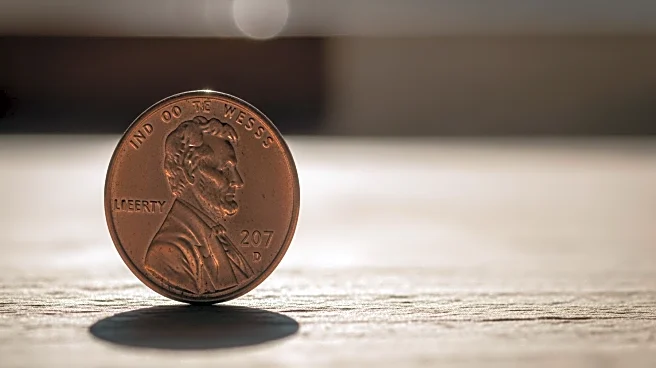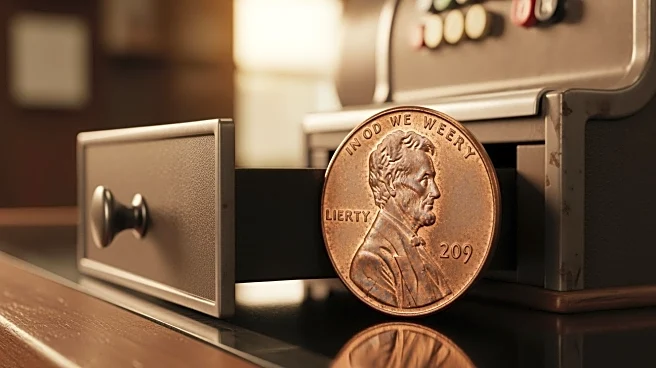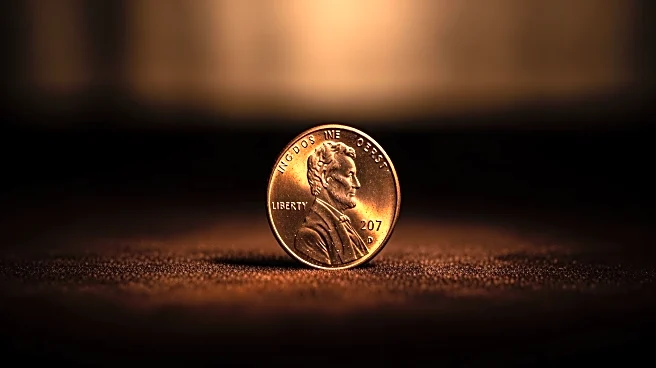What's Happening?
The United States has officially ceased the production of the penny, marking the end of its 232-year circulation. The penny, first minted in 1793, has been a staple of American currency, featuring Abraham
Lincoln since 1909. Despite its historical significance, the penny's production costs have exceeded its value, leading to its discontinuation. The decision reflects changing economic priorities and the shift towards digital transactions. While new pennies will no longer be minted, existing coins will remain in circulation for several decades, allowing Americans to continue using them for small transactions and traditional practices.
Why It's Important?
The discontinuation of the penny signifies a shift in the U.S. economy towards more efficient and cost-effective currency management. As digital transactions become increasingly prevalent, the need for low-denomination coins has diminished. The penny's removal from production highlights the government's efforts to streamline currency operations and reduce unnecessary expenses. This change may influence consumer behavior, encouraging the adoption of digital payment methods and impacting industries reliant on cash transactions.
Beyond the Headlines
The penny's legacy extends beyond its monetary value, serving as a cultural symbol in American society. It has been featured in numerous idioms and traditions, such as 'a penny for your thoughts' and 'penny loafers.' The coin's historical significance and cultural impact will continue to be celebrated, even as it fades from everyday use. The transition away from the penny also raises questions about the future of other low-denomination coins and the broader implications for currency design and usage.













